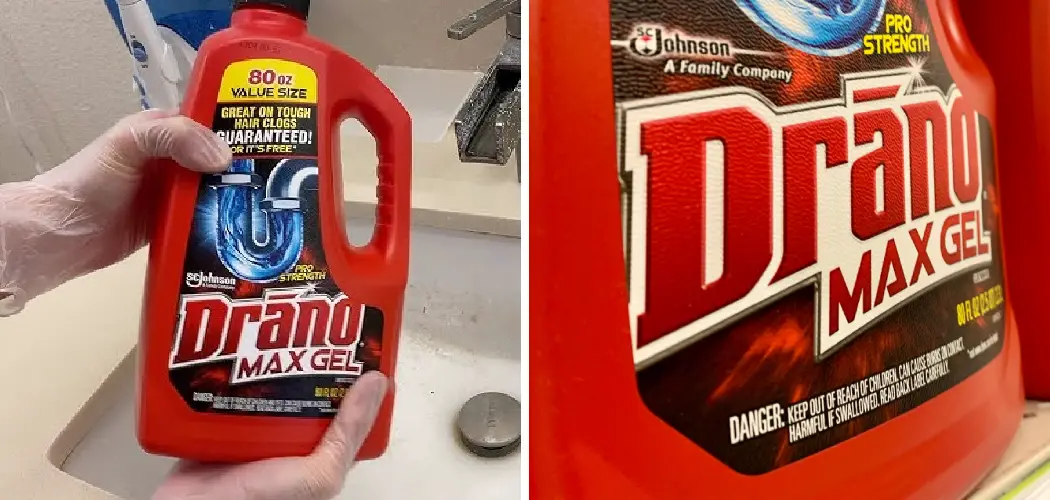Are you facing a clogged garbage disposal? Have you tried using Drano to clear it out? If not, then this guide is for you. In this article, we will discuss how to use Drano in garbage disposal effectively.
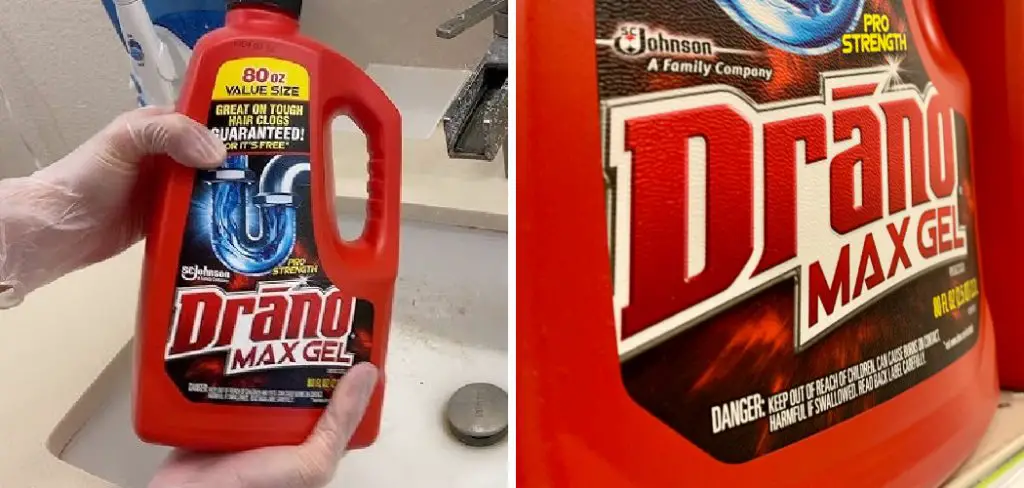
Drano is a popular household cleaner known for unclogging drains and pipes. It contains strong chemicals that break down the organic materials, causing clogs. Although it is primarily used for sinks and tubs, it can also be used in garbage disposals with some precautions.
Using Drano in your garbage disposal can effectively clear clogs and maintain a smooth-running system. Over time, food particles, grease, and other debris can accumulate in the disposal, leading to slow drainage or even complete blockages. Drano is formulated to dissolve these residues, helping to restore optimal functionality.
What Will You Need?
Before we dive into the steps of using Drano in a garbage disposal, let’s gather all the necessary materials. Here’s what you’ll need:
- A bottle of Drano
- Protective gloves and goggles
- A large pot or bucket
- Hot water
Now that you have everything ready let’s move on to the steps for using Drano in your garbage disposal.
10 Easy Steps on How to Use Drano in Garbage Disposal
Step 1: Read the Instructions
Before starting, it’s crucial to carefully read the instructions provided on the Drano bottle. Drano contains powerful chemicals, and following the recommended guidelines is important to ensure safe and effective use. Make sure to pay close attention to any warnings or precautions outlined in the instructions. Familiarizing yourself with the product guidelines will help you proceed confidently and avoid any potential mishaps.
Step 2: Wear Protective Gear
Safety should always come first when handling chemical cleaners. Wear protective gloves and goggles to shield your hands and eyes from any splashes or spills. The chemicals in Drano can be harmful upon contact with skin or eyes, so taking this precaution is essential to prevent accidents.
Step 3: Remove Any Standing Water
If standing water is in your sink or garbage disposal, you must remove it before applying Drano. Use a large pot or bucket to scoop out the water, ensuring the area is as dry as possible. Removing standing water allows Drano to reach the clog directly and effectively.
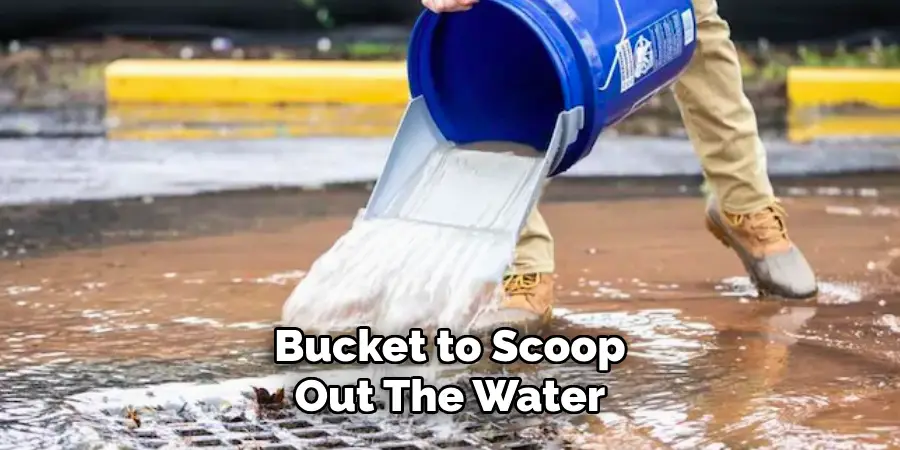
Step 4: Pour Drano into the Disposal
Carefully pour the recommended amount of Drano directly into the garbage disposal. Typically, this will be about half a bottle, but be sure to follow the specific instructions on the label for the best results. Be cautious while pouring to avoid any splashes.
Allow the Drano to settle in the disposal for at least 15 to 30 minutes. This waiting period gives the chemicals enough time to effectively break down the clogging materials. Do not use the sink during this time to ensure that the Drano remains concentrated in the disposal area.
Step 5: Flush with Hot Water
After the waiting period, it’s time to flush out the Drano and the dislodged debris. Carefully pour hot water down the garbage disposal. The hot water helps rinse the loosened clog and any chemical residues. To maximize the flushing effect, you can use a large pot or bucket of hot water. Let the water run for several minutes, ensuring the disposal is clear and operating smoothly. Avoid using boiling water, as this can damage the plumbing.
Step 6: Test the Disposal
Once you have flushed the disposal with hot water, test the system to ensure that the clog has been successfully cleared. Turn on the garbage disposal and run the cold water tap. Check for any signs of slow drainage or remaining blockages. If the disposal runs smoothly and the water drains quickly, then the clog has been effectively removed. If not, you may need to repeat the process or consider consulting a professional plumber for further assistance.
Step 7: Repeat if Necessary
In some cases, especially with particularly stubborn clogs, you might need to repeat the Drano treatment. If you find that the first application did not fully clear the clog, wait at least 24 hours before attempting another round of Drano. This waiting period ensures that the chemicals have dissipated enough to prevent overexposure. Follow the same steps as outlined above, wearing protective gear and handling the Drano with care.
Step 8: Regular Maintenance
Consider incorporating regular maintenance practices to prevent future clogs and maintain a smoothly running garbage disposal.
Avoid disposing of large, fibrous, or greasy food items that can contribute to clogs. Running hot water and a small amount of dish soap through the disposal after each use can help keep the pipes clear. Additionally, using a mixture of baking soda and vinegar can act as a natural cleaning agent, reducing the buildup of residues over time.
Step 9: Alternative Solutions
While Drano is an effective solution for unclogging garbage disposals, there are alternative methods you can try if you prefer to avoid chemical cleaners. Using a plunger or a plumber’s snake can mechanically clear stubborn blockages. Additionally, natural solutions like a mix of baking soda and vinegar followed by hot water can be used to tackle minor clogs.
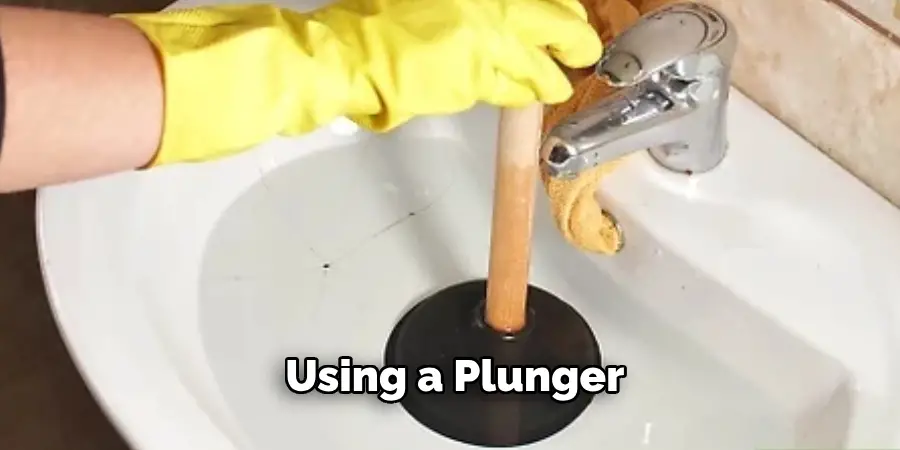
Step 10: Know When to Call a Professional
If you’ve tried multiple methods and your garbage disposal is still clogged or draining slowly, it may be time to call in a professional plumber.
Persistent clogs can indicate a more significant issue within your plumbing system that might require specialized tools or techniques to resolve. A professional plumber can diagnose the problem and provide a more permanent solution, ensuring your garbage disposal and plumbing operate efficiently.
By following these steps, you can use Drano in your garbage disposal with confidence and effectively clear any clogs.
5 Additional Tips and Tricks
- Read the Instructions: Always start by thoroughly reading the instructions on the Drano packaging. Different types of Drano products may have specific usage guidelines that you’ll need to follow for optimal results.
- Run the Disposal: Once you’ve flushed with hot water, run the garbage disposal to ensure that all debris and the Drano solution have passed through. This can also help in breaking down any remaining clogs.
- Keep the area ventilated: As Drano contains strong chemicals, it’s important to keep it well-ventilated while using it. Open windows and doors or use a fan to circulate fresh air.
- Try a Plunger: If the clog persists after using Drano, you can use a plunger to dislodge it. This can be especially effective for toilet clogs.
- Prevent Future Clogs: To prevent future clogs, consider using a drain catcher or strainer to catch hair and other debris before they go down the drain. Regularly pouring hot water down your drains can also help keep them clear.
By following these additional tips and tricks, you can ensure that your Drano solution works efficiently and effectively to unclog your drains.
5 Things You Should Avoid
- Ignoring Safety Precautions: Never overlook the safety instructions on the Drano packaging. Failing to wear gloves and safety goggles or keeping the area ventilated can lead to dangerous exposure to chemicals.
- Using Excessive Amounts: Avoid pouring excessive amounts of Drano into your garbage disposal. Overusing the product can damage the disposal unit and your pipes, leading to more serious plumbing issues.
- Mixing with Other Chemicals: Do not mix Drano with other chemical cleaners. This can cause harmful chemical reactions that may release toxic gases or cause explosions.
- Ignoring Persistent Clogs: If the clog does not clear after using Drano as directed, do not continue to use the product repeatedly. Instead, consult a professional plumber to address the underlying issue.
- Using on Non-Recommend Surfaces: Drano is designed for specific types of clogs and plumbing systems, so you should avoid using it on surfaces or fixtures not recommended by the manufacturer. Always follow the guidelines to prevent unintended damage.
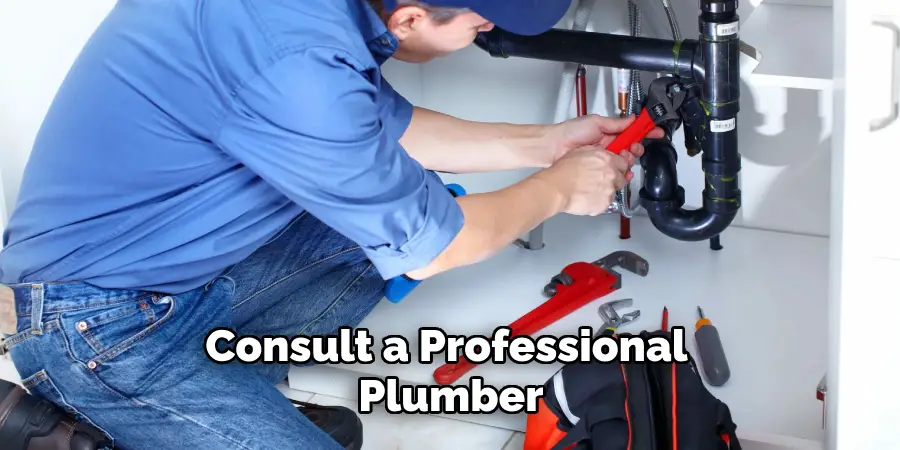
By avoiding these common mistakes, you can use Drano safely and effectively to clear your garbage disposal clogs.
Does Drano Damage Drain Pipes?
Drano is a strong and effective drain cleaner, but like most chemical cleaners, it can potentially cause damage to your pipes if used incorrectly. Some of the factors that can contribute to pipe damage while using Drano include:
- Using excessive amounts of the product
- Ignoring safety precautions
- Mixing with other chemicals
- Overusing on non-recommended surfaces or fixtures.
To prevent potential damage, follow the instructions carefully and use Drano as directed. If you have concerns about your specific plumbing system or notice any issues after using Drano, consult a professional plumber for assistance.
Additionally, to minimize the risk of damaging your pipes, you can use natural alternatives such as baking soda and vinegar, or a drain snake to clear clogs. These methods are generally safer for your plumbing and the environment.
Remember, prevention is always better than cure for clogged drains. Regularly maintaining your drains with natural solutions or using a drain catcher can help prevent the need for harsh chemical cleaners like Drano.
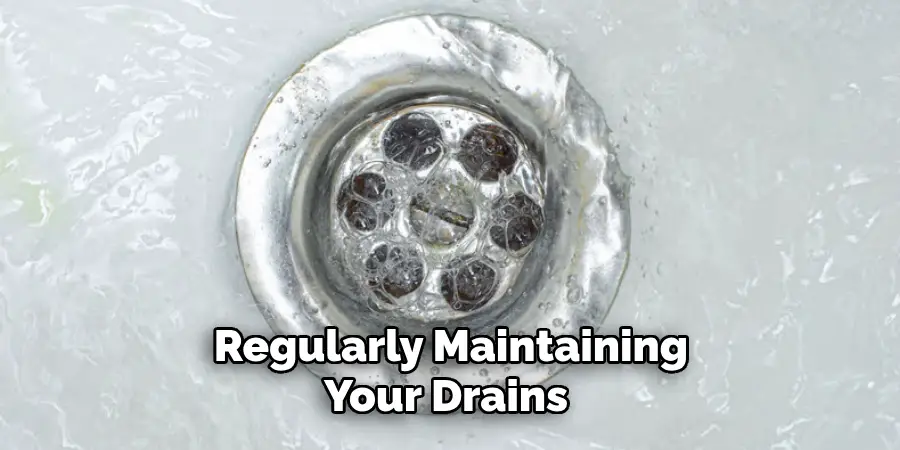
Conclusion
How to use drano in garbage disposal can effectively clear clogs and keep your plumbing running smoothly when done correctly. Start by carefully reading and following the instructions provided on the packaging. Ensure the area is well-ventilated and that you are equipped with the necessary safety gear, such as gloves and goggles.
After applying Drano, follow up by flushing the garbage disposal with hot water and running it to ensure the clog is cleared. Furthermore, combining Drano with mechanical methods such as plungers and preventative measures like drain catchers can enhance its effectiveness and prevent future clogs.
By maintaining these practices, you’ll not only tackle current blockages but also contribute to the long-term health of your plumbing system. Should persistent issues arise, consult a professional plumber to address any deeper underlying problems.
About
Angela is the chief editor of Indoorense. She began her career as an interior designer before applying her strategic and creative passion to lifestyle and home.
She has close to 15 years of experience in creative writing and online content strategy for housekeeping and cleaning,home decorations as well as other efforts.
She loves her job and has the privilege of working with an extraordinary team. She lives with her husband, two sons, and daughter in Petersburg. When she’s not busy working she spent time with her family.

